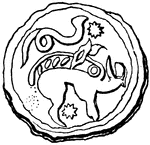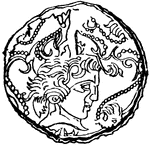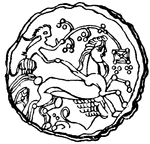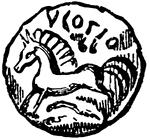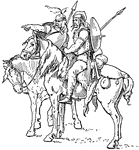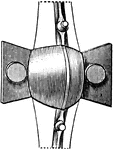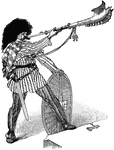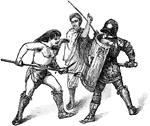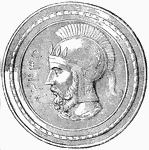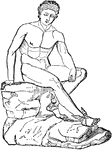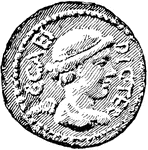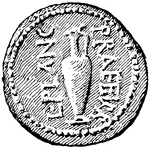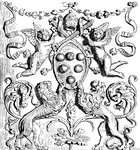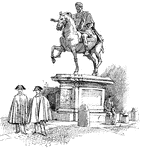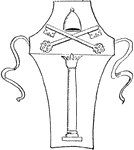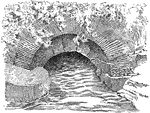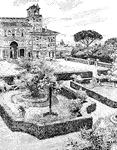
Gallic Soldier Wearing Trousers and a Horned Helmet
A soldier from Gaul carrying a sword in his right hand and shield in his left. He is wearing a cloak…

The Dying Gaul
A Roman copy of an ancient Greek sculpture. The copy is made of marble, while the lost original sculpture…

Gladiators
This illustration shows various types of gladiators, each type with with his specific weapons attributed…

Pompey the Great
Also known as Gnaeus Pompeius Magnus. He was a military and political leader of the late Roman Republic.
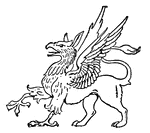
Griffin
In heraldry, the griffin is a fabulous animal, with the head and forefeet of an eagle, and the body,…
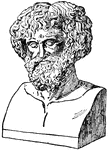
Hannibal
"Hannibal's Passage of the Alps. Hannibal determined to carry the war into Italy. To do this, he had…
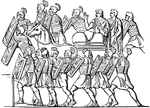
Hollow Square
Military formation of the Romans, also agmen quadratum. Square formation with no troops in the middle.
!["[Caesar] mustered the soldiers in the Campius Martius, and requested a statement of their grievances. Their demands appeared to have a reference to a payment of their dues, the bestowal of promised presents, and a release from further duty. Caesar well knew that the best way to humiliate an insurrection is to grant what it clamors for. He accordingly made an address to his old legion, being careful to begin with "Citizens," instead of "Soldiers." This was gall and wormwood. To be addressed as citizens by their beloved commander! "I discharge you." said he. "You have had enough of fatigue and wounds. I release you from your oath. As to your presents, you shall be paid to the last sesterce." The old veterans could stand no more. They burst into tears, and began to beg for forgiveness. With a certain prudent hesitation, Caesar received them back to favor; but he took care that the leaders who had fomented the mutiny should be executed."—Ridpath, 1885](https://etc.usf.edu/clipart/78900/78945/78945_citizens_01_mth.gif)
Citizens! I Discharge You.
"[Caesar] mustered the soldiers in the Campius Martius, and requested a statement of their grievances.…
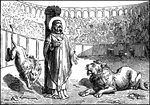
Ignatius of Antioch is Martyred by Being Fed to Lions
Illustration of Ignatius of Antioch, also called Ignatius Theophorus, tied to a post by his neck and…
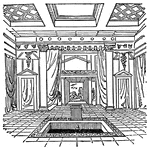
Impluvium
Part of ancient Roman architecture, a basin in the atrium or entrance hall of a building, to receive…

Julian
"Thus the prince, both when present and when coming, was alike victorius: and these things he achieved…
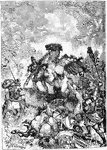
Death of Julian the Apostate
A depiction of Julian the Apostate, a noted philosopher and Roman Emperor, and his death.
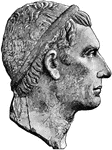
Bust of Julius Caesar
Gaius Julius Caesar was a Roman military and political leader. He played a critical role in the transformation…

Temple of Jupiter
"The door in front of a temple, as it reeached nearly to the ceiling allowed the worshippers to view…
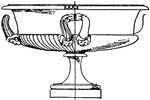
Antique Krater
This antique krater is made out of marble and has four handles. Found in Ostia a town near Rome, this…

Landscape
This painting by Claude Gelle Le Lorrain is a perfect example of the style and technique that he liked…
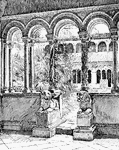
Cloister of the Lateran
"The Benedictine system enjoined three virtues as essential; solitude, humility, and obedience." —…

Roman Leaf
The Roman Leaf design is shown as a capital of a column in Pantheon, Rome. The spoon-like roundings…

Sleeping Lion
The Lion Sleeping is a monument to Pope Clement XIII is found in St. Peter's, Rome is designed by Canova.

A Roman Litter
"The litter consists of an ordinary couch with four posts and a pair of posts. Curtains fastened to…
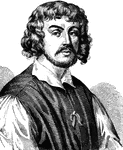
Claude Gelle Le Lorrain
Claude Gelle Le Lorrain (1600-1682), was an Italian born artist who painted many secular, unclassical,…

Bust of Mark Antony
Marcus Antonius, known in English as Mark Antony, was a Roman politician and General. He was an important…
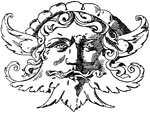
Grotesque Mask
This Grotesque mask was designed during the Italian Renaissance, by Sansovino. It is found on the tomb…
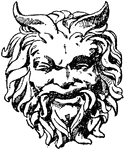
Satyr Mask
The Satyr Mask (Greek Mythological character) was designed during the Italian Renaissance by Sansovino,…
